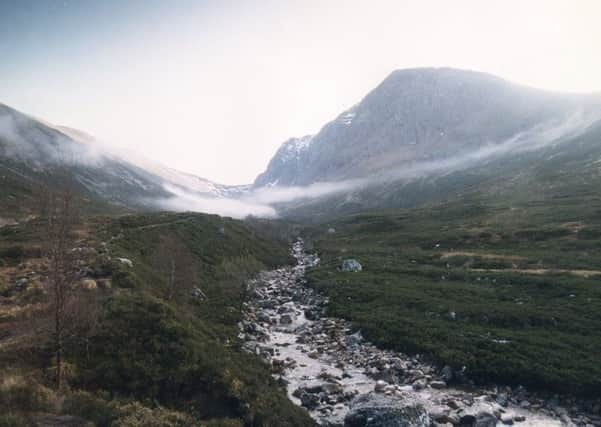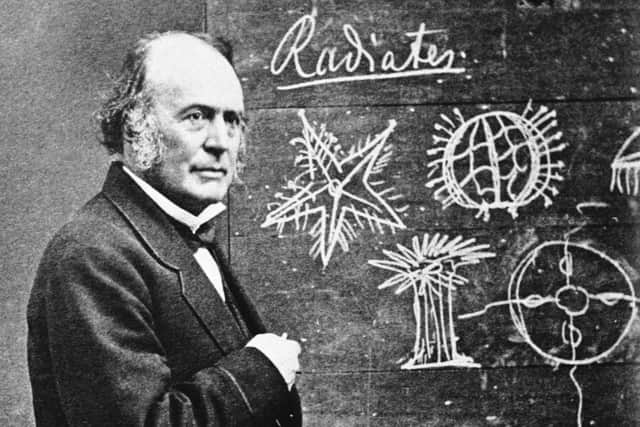Scotsman 200: Highland glacier revealed existence of the Ice Age


INTRODUCTION
What is an explorer? According to the OED, it is “a person who explores a new or unfamiliar area”. The Cambridge Dictionary is more specific: “Someone who travels to places where no-one has ever been in order to find out what is there.” Judged by these definitions, the geologists Louis Agassiz and William Buckland did not qualify as explorers, when, in 1840, they set off into the Highlands to look for evidence of glaciation, and therefore prove the existence of the Ice Age. So what are they doing in this supplement?
In his 2012 Book The Natural Explorer, Tristan Gooley proposed a new, 21st century way of looking at exploration. In a world where every corner of every landmass has already been mapped, Gooley suggests that, in order to be an explorer, the discovery of virgin territory isn’t necessarily a prerequisite. Instead, an explorer is simply one who travels somewhere, makes new discoveries and communicates these discoveries to others. By Gooley’s more nuanced definition, then, Agassiz and Buckland were indeed explorers, and, as discoveries don’t come much bigger than that of the Ice Age, they can be considered explorers of considerable significance.


Advertisement
Hide AdAdvertisement
Hide AdThree years before his expedition to the Highlands, Agassiz had been the first to propose that the Earth had been subject to an Ice Age in the distant past. He theorised that ancient glaciers had not only flowed outward from the Alps, but that even larger glaciers had, at the same time, moved south across Europe, Asia and North America, smothering much of the northern hemisphere. The evidence of glaciation he and Buckland discovered in the Highlands substantiated his claim.
Thanks to the far-sightedness of Scotsman editor John Hill Burton, the paper sent a journalist along with Agassiz and Buckland to report on their findings, and as a result this was the first newspaper in the world to tell its readers, on 7 October 1840, that an Ice Age had occurred several thousand years ago. It was, as the journalist and author Neal Ascherson has put it, “a scoop of a gigantic scale”.
FROM THE ARCHIVES: WEDNESDAY, 7 OCTOBER, 1840
Discovery of the former existence of glaciers in Scotland, especially in the Highlands, by Professor Agassiz


Professor Agassiz of Neufchatel has recently been studying the glaciers of the Alps with great care, and has been led by his investigations to certain bold, novel and highly interesting conclusions respecting the part which these singular bodies have acted in the physical history of the globe. We were present when he explained his views in the Geological Section of the British Association at Glasgow, and subjoin a short outline of them, drawn up, we believe, under his own eye. To this we are enabled to add a most interesting communication, addressed by him to Professor Jameson, bringing out the important fact, that he has discovered distinct indications of the ancient existence of glaciers at Ben Nevis, and elsewhere in the Highlands.
There are other geological phenomena which lead us to conclude that the climate of this country at a former, but, geologically speaking, a recent epoch, was much colder than it now is; and that such a state of things is consistent with the course of nature, is shown by the fact that Mr Darwin found glaciers reaching down to the level of the sea on the west coast of Chile, in latitude 46 degrees, that is, 11 degrees nearer to the equator than Ben Nevis. The evidence on which M. Agassiz’s experience in the Alps has taught him to rely, consists, first, of the striated and smoothed surfaces of the rocks, the direction of the strim being along the valley; secondly, of morains, or long narrow ridges of gravel, which deposited on the flanks of the glaciers in their course, or floated off by icebergs when the glaciers reach the sea. In a work just published, he shows that the great valley of Switzerland, between the Alps and Jura, fifty miles in breadth, was formerly covered by one great sheet of ice.
The following is a brief notice of the communication made by Professor Agassiz viva voce to the Association, ‘On the Glaciers and Boulders of Switzerland:’ -
“Professor Agassiz of Neufchatel gave a most valuable communication upon the glaciers of Switzerland, in which he particularly drew their attention to facts relative to the manner of their movements, which he attributes to the continual introduction of water into all their minutest fissures, which, in freezing, continually expands the mass. The effects of the movement produced by this expansion upon the rocks beneath the ice, are very remarkable. The basis of the glaciers, and the sides of the valleys which contain them, are always polished and scratched. The fragments of the rocks that fall upon the glaciers are accumulated in longitudinal ridges on the sides of the ice by the effects of the unequal movement of its middle and lateral masses.
Advertisement
Hide AdAdvertisement
Hide Ad“The result is longitudinal deposits of stony detritus, which are called morains; but as the glaciers are continually pressed forwards, and often in hot summers melted back at their lower extremity, it results that the polished surfaces, occasioned by friction on the bottom and sides, are left uncovered, and that the morains, or curvilinear ridges of gravel, remain upon the rocks formerly covered by the ice, so that we can discover, by the polished surfaces and the morains, the extent to which the glaciers have heretofore existed, much beyond the limits they now occupy in the Alpine valleys.
“It even appears to result from the facts mentioned by Professor Agassiz, that enormous masses of ice have, at a former period, covered the great valley of Switzerland, together with the whole chain of the Jura, the sides of which, facing the Alps, are also polished, and interspersed with angular, erratic rocks, resembling the boulders in the morains, but so far different, that the masses of ice not being there confined between two sides of a valley, their movements were in some respects different – the boulders not being connected in continuous ridges, but dispersed singly over the Jura at different levels.
“Professor Agassiz conceives that at a certain epoch all the north of Europe, and also the north of Asia and America, were covered with a mass of ice, in which the elephants and other mammalia found in the frozen mud and gravel of the Arctic regions, were embedded at the time of their destruction. The author thinks that when this immense mass of ice began quickly to melt, the currents of water that resulted have transported and deposited the masses of irregularly-rounded boulders and gravel that fill the bottoms of the valleys; innumerable boulders having at the same time been transported, together with mud and gravel, upon the masses of the glaciers then set afloat. Professor Agassiz announced that these facts are explained at length in the work which he has just published, “Etudes sur les Glaciers de la Suisse,” illustrated by many beautiful plates, which were laid before the Geological Section.
“Professor Agassiz is also inclined to suppose that glaciers have been spread over Scotland, and have everywhere produced similar results. If we understood him rightly, he means to follow up his valuable researches in the Highlands of Scotland during his stay in this country, where he confidently expects to find evidence of such glaciers having existed, particularly around Ben Nevis.”
The letter to Professor Jameson was intended to appear in the Philosophical Journal, which, however, was published some days ago, and the Professor has obligingly transmitted it to us for insertion in The Scotsman, with the following notes: - “I enclose an extract of a letter received from Agassiz, dated Fort Augustus, October 3, which has just reached me, but too late for the Philosophical Journal. As it is of great importance in a geological point of view, I send it for insertion in your journal. It proves the former existence of glaciers in Scotland, and gives what may be considered the true explanation of the parallel roads of Glen Roy, &c &c. Ever since I published the account of the great morains in Norway, in districts where no glaciers are now to be seen, I have kept a look out for further information on this important subject, and have not failed to lay before the public, in the Edinburgh New Philosophical Journal, also of Studer, Renoir, and, above all, the truly original and beautiful investigations and views of Agassiz.”
The full report of this account is available on the Scotsman Digital Archive